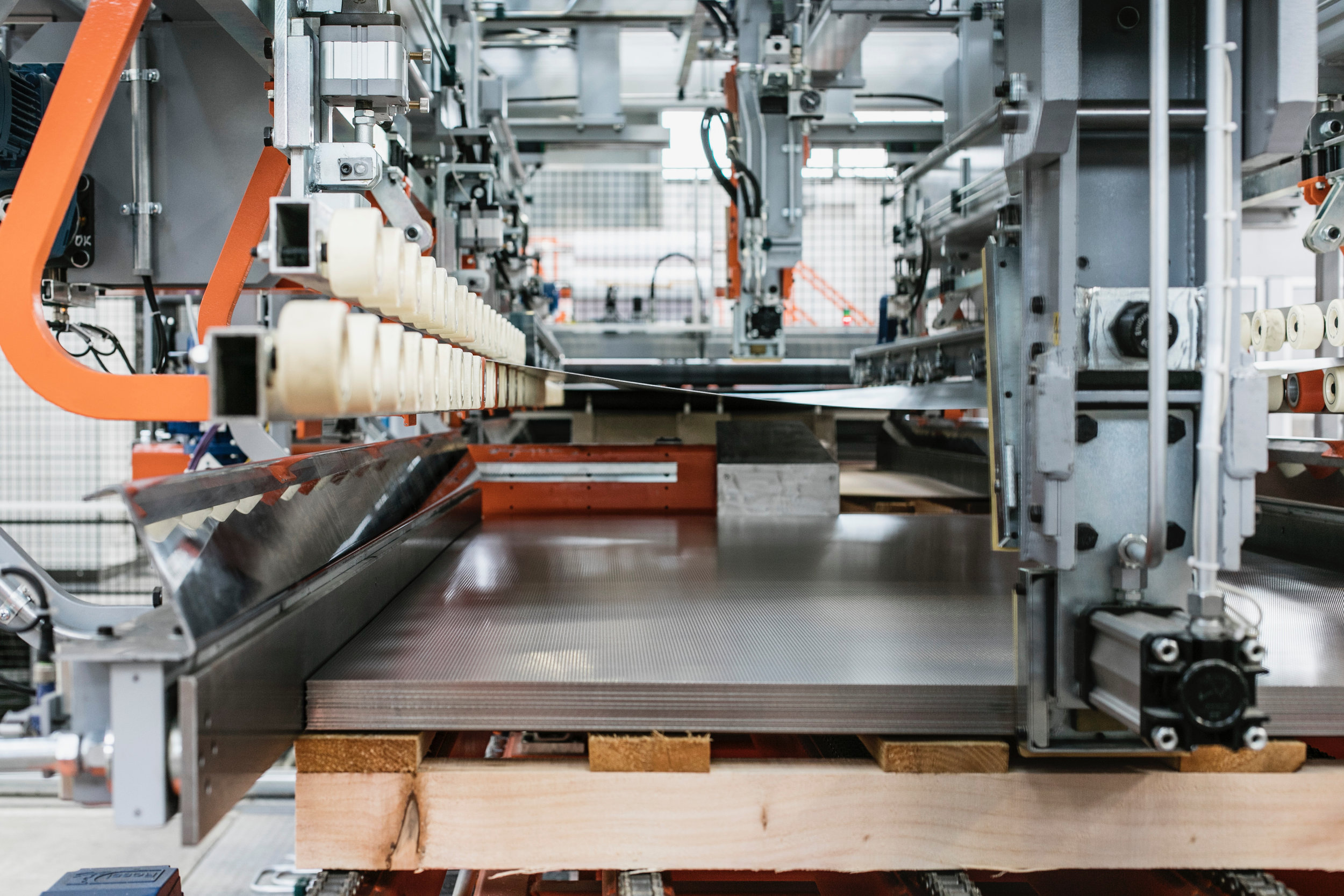Getting heavy with metal
As my short material essays have detailed over the course of the year, there have been multiple ‘material ages;’ large periods of time in which the human race relied upon a particular material in maintaining and developing the species. There are however, very few that can boast to being the inspiration behind an entire music genre.
The density, hardness, weight and threateningly sharp potential of metal offered the perfect associations for the inventors of the rock music sub-genre back in the 1960’s and 70’s. But such properties had already been recognised and utilised many millennia before. There is evidence of homo sapiens harnessing the power of bronze some five thousand years ago; a material age that was surpassed by iron - albeit having been preceded by the colossally long stone (and wood) age.
We have long since relied upon metal to hunt and defend ourselves with weaponry; to exchange goods via pre-determined currency; to aid our various modes of transportation and to build our infrastructure. Although, when you think about it, it’s hardly a surprise. After all, 80% of the elements on the periodic table are classified as being metal. This underlines metals origins, which are very much rooted in chemistry. Metals cover some 25% of the earth’s crust, but there are few that we use in their native state. Precious metals such as gold, copper and platinum are such examples, but for the majority, further alchemy is required in transforming metal ore into the useful metals that we come into daily contact with. This process generally involves oxidisation and very high temperatures, which alters the atomic structure. Throw other chemicals such as carbon into the mix and you create alloys, which greatly enhance the properties of the material.
Cracking the molecular formulas that give metal alloys their unique properties catapulted us head first into the industrial revolution, most notably with the invention of steel. This dawned a whole new metal age and arguably, one that we are still very much operating within. Both big and small, metals are formed to create countless components that aid our daily existence; whilst the manufacturing processes involved in the creation of pretty much all of the other objects and environments that we come into contact with, will have been aided by some form of metal.
Our built environments are often reliant upon metal in keeping them upright and able to bear weight through the usage of RSJ’s in Meccano-like formations. But the exterior and interior of buildings can also benefit from the many properties metals have to offer. Rimex Metals Group has been producing industry ready sheet metals for over 60 years and you may be even more familiar with their products than you realised. As well as covering motorway and train bridges, the inside of many an elevator and offering a suitable surface to create signage from, Rimex metals can be found on and in numerous buildings here in the UK.
Graphene Institute
They include educational facilities, such as Blackburn College, Metropolitan University and Anglia Polytechnic to name but a few; transportation hubs like the East London Line stations and a whole heap of extraordinary architectural masterpieces that include The Jewish Museum, The Graphene Institute and rather aptly, the Royal Mint Experience. Collectively these projects highlight a triad of properties that are seldom matched by any other materials, particularly when it comes to facades, namely; protection, reflection and colour. We may not associate the latter with metal, but coloured stainless steel clad buildings like the Experience Museum and Bucks New University beautifully show otherwise.
Experience Museum
But it’s not just in bar, beam or sheet form in which we come into contact with metal in our built environments. Amron Architectural has been supplying metal mesh for interior and architectural projects for over a decade, although the mesh was intended for other purposes initially. As the name suggests, Amron’s parent company the Wire Belt Group, have been creating the metal meshes that form the moving belt on conveyor systems, most notably those used in the food industry, for over 50 years.
The realisation that fixing them to a rigid frame offers a multitude of new applications paved the way for Amron to grow. That growth has taken in a number of specialist mesh manufacturers and the company are now seen as a market leader in both flexible and rigid mesh, supplying products for practical and decorative purposes across the globe.
One Alfie Street
Here in the UK, 1 Alfie Street is a project that underscores the potential of the material. Design practice Oktra specified an expanded mesh in creating stylish and contemporary wall cladding and partitioning within the reception area.
The ability to cast metal also means that it can be turned into a infinite number of shapes and sizes, including modular surfaces for interior applications – something that Giles Miller Studio have employed in producing a number of their ranges.
Veil
Back in August I interviewed Giles shortly after the completion of their largest indoor installation to date. Veil is a 17m long solid brass sculpture that is both a work of art and functional screen, semi-obscuring an office behind it. Other ranges have required metal to transform them into super-sturdy and shock resistant surfaces. The Harper tile is the metallic sibling of the hexagonal Alexander tile, which is made of ceramic.
Harper Tile
The Harper Tile was originally developed for a series of Butler’s Chocolates counter fronts located in airports. Recognising the potential for damage caused by continued impact of suitcases and luggage Giles Miller Studio cast the tiles in metal and now the range is available in a range of plated or powder coated finishes.
Metal has proven to be a material for all ages and it looks like it will continue to be an invaluable material in the future as we continue to build our infrastructure, shape our products and house our rockets from one metal or another. It’ll be interesting to see just how far we can go with metal.
This article was originally published by Design Insider Live.









